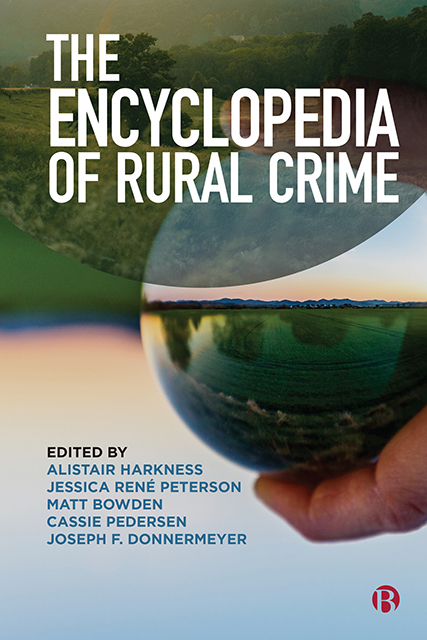Book contents
66 - Rural Crime Prevention
Published online by Cambridge University Press: 20 June 2023
Summary
Crime prevention encompasses a number of actions and methods that attempt to address the causes of crime with the intention of reducing crime, victimization and fear and improving community safety (see United Nations Office on Drugs and Crime, 2021). Within this definition, crime is often based on consensus theories that define crime as infractions of the law. In addition, the nature of the data collected regarding the extent of the problem, and/ or the effectiveness of the solution, is often normative. This positivist approach assumes that official crime and victimization data accurately reflect the true nature and extent of these experiences, whilst acknowledging the limits of data collection methods, such as under reporting.
Importantly, much of the crime prevention literature focuses heavily on urban contexts, assuming that rural areas lack real crime problems and instead reflect the gemeinschaft, or rural idyll, in which strong community cohesion acts as a protective factor against crime (refer to Barclay et al in suggested readings). This literature largely ignores the unique challenges in rural communities. For example, farming communities deal with high rates of theft of expensive stock and equipment that can contribute to significant losses to local livelihoods. Fly-in-fly-out communities, with transitional workers, often experience issues with drug and alcohol abuse. Many rural communities have large Indigenous or newcomer populations that may result in higher rates of marginalization, disadvantage and even hate crime. Victims of domestic violence are often unable to access resources or leave their abuser as there are no services in their communities. Furthermore, advances in technology have increased opportunities for online fraud and theft that stretch beyond geographical boundaries.
In the broader crime prevention literature, there are three levels of crime prevention strategies: primary, secondary and tertiary. Primary-level approaches attempt to prevent crime before it ever happens. These are often large-scale approaches addressing the predictors of crime. Secondary-level approaches focus on people or places demonstrating higher levels of risk for criminal behaviour. Tertiary-level crime prevention approaches address crime, once it has already happened, attempting to prevent further offending.
- Type
- Chapter
- Information
- The Encyclopedia of Rural Crime , pp. 261 - 264Publisher: Bristol University PressPrint publication year: 2022

